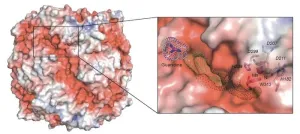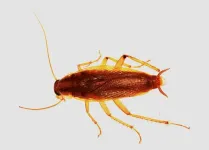The opioid epidemic continues to have devastating effects in the United States, exacerbated by the increasing presence of fentanyl in illicit opioids. Naloxone is an effective antidote, but it usually requires rapid administration from a bystander. Now, researchers from Brigham and Women’s Hospital, a founding member of the Mass General Brigham healthcare system, and MIT, have developed an implantable device to detect and reverse opioid overdoses. The device, which they call “iSOS,” continuously monitors heart and respiratory systems for signs of overdose and automatically delivers naloxone when necessary. In preclinical studies, iSOS effectively detected and reversed opioid overdoses. The study is published in the journal Device.
“Naloxone is life-saving but frequently may not be delivered in time,” said co-first author Peter Ray Chai, MD, MS, Department of Emergency Medicine at Brigham and Women's Hospital. “The iSOS device provides a highly innovative strategy to provide detection of opioid overdose, allowing for precise administration of naloxone at the moment it is needed, hopefully saving individuals from overdose and facilitating continued recovery from opioid use disorder.”
During overdoses, people generally lose consciousness, so having an automated delivery system for naloxone could save the lives of people who use opioids by themselves.
“In overdose cases where there is a bystander nearby, that individual can be rescued through either intramuscular or intranasal administration of naloxone, but you need that bystander. We wanted to find a way for this to be done in an autonomous fashion.” said corresponding author Giovanni Traverso, MB, PhD, MBBCH, Department of Medicine at Brigham and Women’s Hospital and MIT.
To do away with the need for bystander intervention, the researchers wanted to design a “closed loop” system that could both detect opioid overdose and deliver the drug without outside guidance. To enable autonomous detection, the team fitted the device with multiple sensors that continuously monitor the user’s respiratory rate, heart rate, body temperature, and blood oxygen saturation. These sensors connect to an algorithm that is trained to recognize the signs of overdose by integrating the various cardiorespiratory signals.
When the device detects a suspected opioid overdose, it begins buzzing to alert the user and sends an alert to their phone which allows the user to cancel naloxone administration if they are not experiencing an overdose. If it is not overridden, the device administers a shot of naloxone directly into the user’s tissue.
“Beyond the closed loop, the device can also serve as an early detection or warning system that can help alert others—whether it be loved ones, healthcare professionals or emergency services—to the side of the person so that they can help intervene as well,” said Traverso.
“To combat the high mortality associated with opioid overdoses, our fully implantable iSOS—with its continuous monitoring and rapid drug infusion capabilities—could serve as a pivotal next-generation antidote platform,” said co-first author Seungho Lee, PhD, a research scientist at MIT and in the Department of Medicine at Brigham and Women's Hospital.
The prototype device measures 8 mm x 12 mm x 78 mm (larger than a contraceptive implant but smaller than a subcutaneous cardiac defibrillator). It has a wirelessly rechargeable battery that can last up to 14 days, a refillable drug reservoir, and can be implanted subcutaneously via a minimally invasive procedure under local anesthesia. The team tested the device’s safety and efficacy in a large animal model, finding that the device effectively detected and reversed opioid overdoses in 24 out of 25 pigs.
The researchers note that the device could be particularly useful for individuals who have previously overdosed, since these individuals are more likely to overdose again. They also say that having an implantable device may be more effective than a wearable device.
“The problem with wearables is that one has to wear them, and that in itself presents a potential challenge from an adherence perspective,” says Traverso. “If the patient really wants to help protect themselves against overdose, an implantable or ingestible device could help support this sort of general vision.”
The researchers are now working to further optimize and miniaturize the device and intend to conduct additional preclinical trials before moving onto human testing. They also plan to begin collecting data on end-user preferences to help guide their engineering efforts.
“Understanding the preferences of this patient population will be a critical part of our ongoing work to develop and mature this technology, said Traverso. “This is only the first lab-based prototype, but even at this stage we’re seeing that this device has a lot of potential to help protect high-risk populations from what otherwise could be a lethal overdose.”
Authorship: In addition to Traverso Chai, and Lee, BWH authors include co-first author Hen-Wei Huang, Tom Kerssemakers, Ali Imani, Jack Chen, Marco Heim, Jessica Y. Bo, Adam Wentworth, Fokion T. Sanoudos–Dramaliotis, Ian Ballinger, Alexander Alexiev, Jason Li, and Siheng Sean You.
Additional authors include Saurav Maji, Matt Murphy, Gloria H Kang, Niora Fabian, Josh Jenkins, Andrew Pettinari, Keiko Ishida, Alison M. Hayward, and Anantha Chandrakasan.
Disclosures: The authors declare submission of a provisional patent application (PCT/US2022/080385) describing the materials and applications of the systems described here. Complete details of all relationships for profit and not for profit for Traverso can be found at the following link. All other authors declare that they have no competing interests. Work described in this manuscript was funded by Novo Nordisk, the McGraw Family Funding, MIT Department of Mechanical Engineering, MIT Karl Van Tassel (1925) Career Development Professorship Chair. Chai funded by NIH DP2DA056107.
Funding: Novo Nordisk, The McGraw Family Foundation, MIT Department of Mechanical Engineering, MIT Karl Van Tassel (1925) Career Development Professorship Chair.
Paper cited: Huang, H et al. “An Implantable System for Opioid Safety (iSOS)” Device DOI: 10.1016/j.device.2024.100517
###
About Mass General Brigham
Mass General Brigham is an integrated academic health care system, uniting great minds to solve the hardest problems in medicine for our communities and the world. Mass General Brigham connects a full continuum of care across a system of academic medical centers, community and specialty hospitals, a health insurance plan, physician networks, community health centers, home care, and long-term care services. Mass General Brigham is a nonprofit organization committed to patient care, research, teaching, and service to the community. In addition, Mass General Brigham is one of the nation’s leading biomedical research organizations with several Harvard Medical School teaching hospitals. For more information, please visit massgeneralbrigham.org.
END




